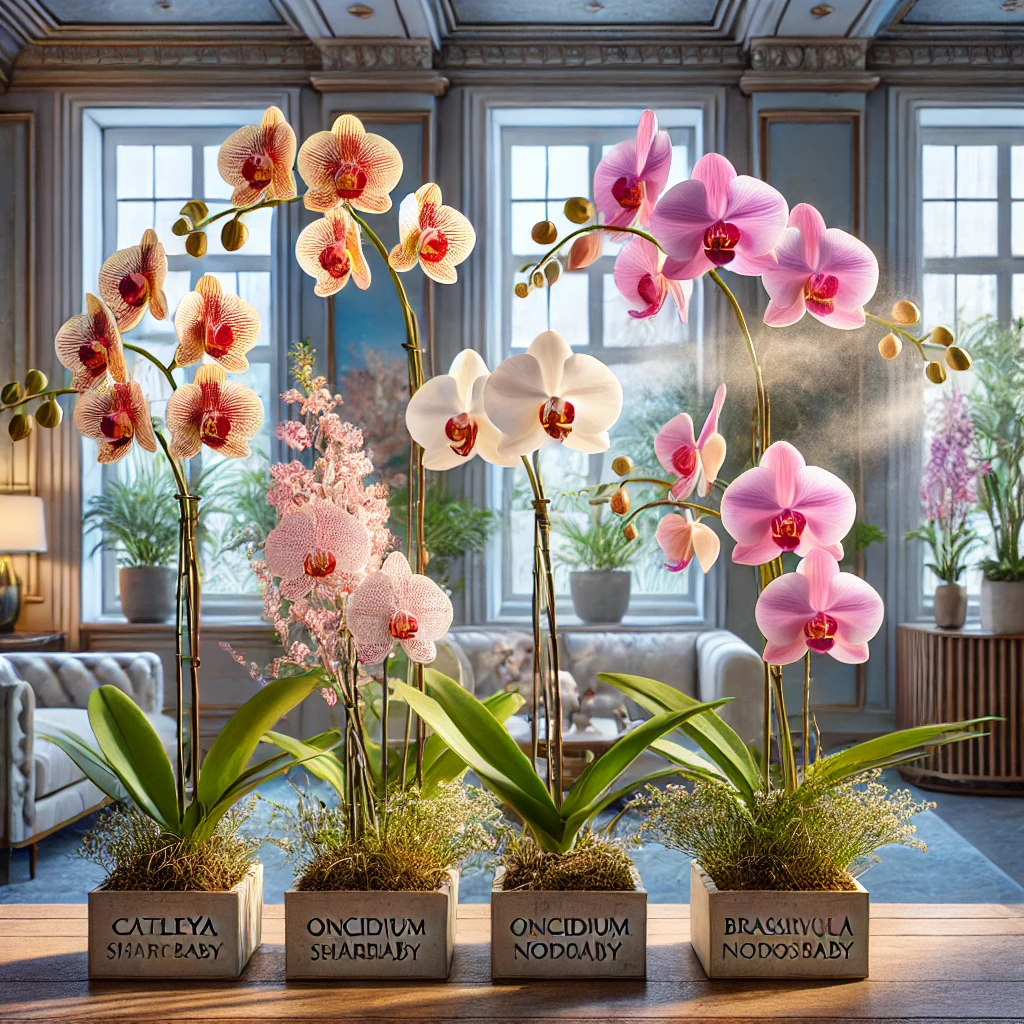Orchids are admired for their beauty and diversity, but one of their most overlooked qualities is their fragrance. While not all orchids produce a scent, many species exude exquisite floral, fruity, or spicy aromas that make them even more desirable. Understanding how to grow fragrant orchids successfully can elevate the orchid-growing experience, bringing both visual appeal and delightful scents into your home or garden.
The first step to growing fragrant orchids is selecting the right species. Some orchids are well-known for their intoxicating aromas, while others have little to no fragrance. Cattleya orchids, often called the “Queen of Orchids,” are famous for their sweet, citrusy scent, making them a favorite among growers. Oncidium orchids, particularly Oncidium Sharry Baby, have a chocolate-like aroma, while Cymbidium orchids emit a refreshing citrus scent. Brassavola nodosa, known as the Lady of the Night Orchid, releases its strong, gardenia-like fragrance in the evening, attracting pollinators in the wild. Maxillaria tenuifolia, often called the Coconut Orchid, is beloved for its tropical coconut aroma, making it a unique addition to any collection.
Once you’ve chosen the right fragrant orchid, the next step is to ensure it receives optimal growing conditions. Orchid fragrance is strongly influenced by environmental factors, including light, temperature, humidity, and nutrition. Without the right care, even naturally fragrant orchids may produce little to no scent.
Light plays a crucial role in developing fragrance and blooms. Most fragrant orchids require bright, indirect light to maximize their scent production. If an orchid does not receive enough light, it may still bloom but fail to develop its characteristic fragrance. Placing orchids near an east-facing window provides them with gentle morning sunlight without the risk of scorching their leaves. For orchids that require higher light levels, such as Cattleya and Cymbidium, a south-facing window with filtered light is ideal. If natural light is insufficient, using LED grow lights with a full spectrum can help orchids reach their full potential.
Temperature and humidity also influence an orchid’s ability to produce fragrance. Many fragrant orchids have temperature-dependent scent production, meaning they release their fragrance at specific times of the day. For example, Brassavola nodosa emits its strongest scent at night, while Cattleya orchids release fragrance in warm daytime temperatures. Ensuring a stable temperature between 65°F and 85°F (18°C to 29°C) helps orchids produce consistent fragrance and healthy blooms. Maintaining humidity levels between 50% and 70% ensures the orchid remains hydrated, preventing stress that can suppress scent production. Using a humidity tray, misting, or a humidifier can help regulate moisture levels, especially in dry environments.
Proper watering is another key factor in growing fragrant orchids. Overwatering can lead to root rot, which weakens the plant and reduces its ability to produce blooms and fragrance. Orchids should be watered only when the roots turn silvery-white, ensuring they receive adequate hydration without sitting in soggy conditions. Using a well-draining potting mix, such as bark, sphagnum moss, or coconut husk, helps prevent water retention while maintaining the right level of moisture for orchid roots.
Nutrient balance is also essential for maximizing fragrance. Orchids need a proper fertilizer regimen to produce strong, healthy flowers with enhanced scent production. Using a balanced fertilizer (20-20-20) during the growing season promotes leaf and root growth, while a high-phosphorus fertilizer (10-30-20) before blooming encourages flower and fragrance development. Fertilizing every two weeks with a diluted orchid fertilizer ensures orchids receive the necessary nutrients without the risk of overfeeding.
Air circulation plays a surprising role in fragrance development. Orchids need good airflow to distribute their scent and maintain healthy roots. Stagnant air can lead to fungal infections and weaken fragrance intensity. Keeping orchids in a well-ventilated area, using a gentle fan, or placing them near an open window ensures fresh air movement, enhancing their ability to release their natural fragrance.
Pruning and deadheading spent flowers also contribute to fragrance longevity. Once an orchid has finished blooming, removing old flower spikes directs the plant’s energy toward new growth and potential future blooms. Keeping the leaves clean and free of dust enhances photosynthesis, which indirectly influences scent production by ensuring the plant is in optimal health.
If an orchid fails to produce fragrance despite proper care, the issue may be genetic. Some hybrids have been bred more for their visual appeal than for their fragrance, resulting in flowers that resemble fragrant orchids but have little to no scent. In such cases, researching the parentage of hybrid orchids can help determine if a specific plant is capable of producing fragrance.
Another way to enhance the fragrance experience is by strategically placing orchids in areas where air movement naturally carries their scent. Positioning fragrant orchids in bedrooms, living rooms, or near entryways allows their natural perfume to fill the space. Since some orchids release their scent at specific times of the day, observing when the fragrance is strongest can help optimize their placement in the home.
For those who enjoy experimenting with different scents, growing a collection of fragrant orchids with varying aromas can create a diverse olfactory experience. Pairing Cattleya orchids with citrusy Cymbidiums or placing a chocolate-scented Oncidium Sharry Baby near a coconut-scented Maxillaria tenuifolia can create a delightful mix of complementary fragrances.
Cultivating fragrant orchids is an enriching experience that combines beauty, sensory enjoyment, and horticultural expertise. By selecting naturally fragrant orchid species, optimizing light, temperature, humidity, and nutrition, and ensuring proper care and pruning, growers can enjoy the full aromatic potential of these stunning plants. Whether used to enhance indoor spaces or simply to enjoy their captivating scent, fragrant orchids bring a unique and rewarding dimension to orchid cultivation.
